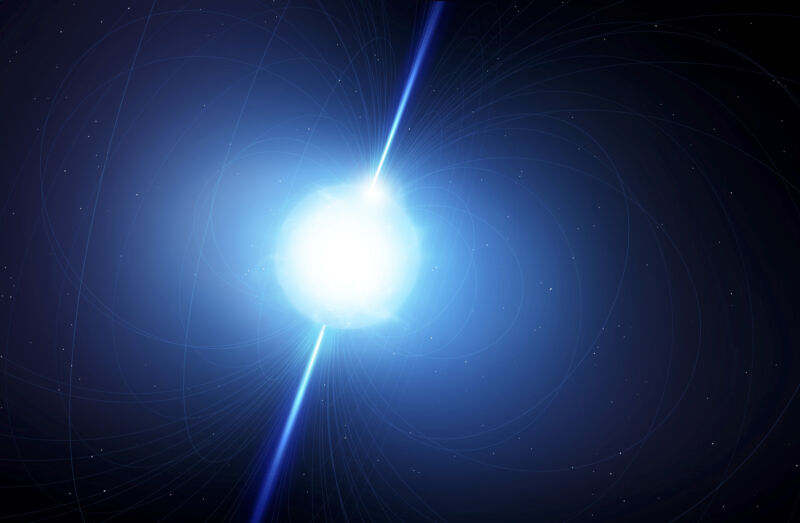
Enlarge / Most of the explanations for this phenomenon involve a neutron star, depicted above. These explanations are uniformly terrible.
On Wednesday, researchers announced the discovery of a new astronomical enigma. The new object, GPM J1839–10, behaves a bit like a pulsar, sending out regular bursts of radio energy. But the physics that drives pulsars means that they'd stop emitting if they slowed down too much, and almost every pulsar we know of blinks at least once per minute.
GPM J1839–10 takes 22 minutes between pulses. We have no idea what kind of physics or what kind of objects can power that.
A persistent transient
GPM J1839–10 was discovered in a search of the galactic plane for transient objects—something that's not there when you first look, but appears the next time you check. The typical explanation for a transient object is something like a supernova, where a major event gives something an immense boost in brightness. They're found at the radio end of the spectrum, fast radio bursts, but are also very brief and, so, fairly difficult to spot.
In any case, GPM J1839–10 showed up in the search in a rather unusual way: It showed up as a transient item twice in the same night of observation. Rather than delivering a short burst of immense energy, such as a fast radio burst, GPM J1839–10 was much lower energy and spread out over a 30-second-long burst.
Follow-on observations showed that the object repeated pretty regularly, with a periodicity of about 1,320 seconds (more commonly known as 22 minutes). There's a window of about 400 seconds centered on that periodicity, and a burst can appear anywhere within the window and will last anywhere from 30 to 300 seconds. While active, the intensity of GPM J1839–10 can vary, with lots of sub-bursts within the main signal. Occasionally, a window will also go by without any bursts.
A search through archival data showed that signals had been detected at the site as far back as 1988. So, whatever is producing this signal is not really a transient, in the sense that the phenomenon that's producing these bursts isn't a one-time-only event.
The list of known objects that can produce this sort of behavior is short and consists of precisely zero items.
from Hacker News https://ift.tt/kxg1ZRQ
No comments:
Post a Comment
Note: Only a member of this blog may post a comment.